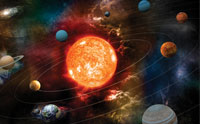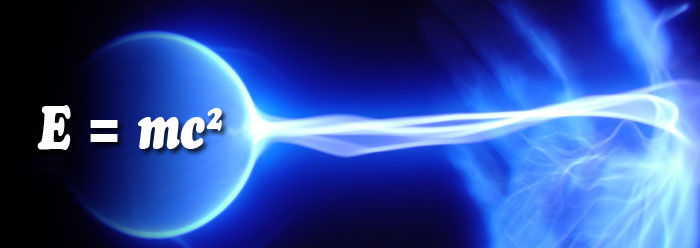
ICR Research
Investigating the science that affirms biblical creation
Clearly Seen
Worldwide we see creatures perfectly suited to thrive in their environments: hummingbirds with beaks designed for collecting nectar, blind cavefish that express highly engineered traits for life in the dark, and octopuses that rapidly regulate the speed of signals transmitted through nerves in either warm tropical or frigid polar water. These features reveal the power, wisdom, intention, and care of their Creator, the Lord Jesus. As Romans 1:20 states, God’s attributes are “clearly seen” in everything He has made.
But for many, the truth of Christ’s creation has been subverted by Darwinian selectionism, which personifies nature with intelligence and volition. Evolutionists believe that adaptive characteristics of animals and plants came about as nature—a substitute creator—sculpted their diversity over long ages. ICR’s research exposes Darwin’s lie and restores credit to the Creator for His exquisitely engineered creatures.
Engineered Biological Design
The Institute for Creation Research is developing an engineering-based model called continuous environmental tracking (CET) that emphasizes the incredible problem-solving abilities Christ designed into living creatures. It applies engineering principles to reveal how organisms successfully relate with their environments and with other organisms.
Click here for more information.
The Chimp Genome
The ICR life sciences team has been conducting a large-scale comparison project of human versus chimp DNA sequence, producing research showing that chimp DNA is only about 84% similar to human.
Evolutionists frequently claim that human and chimp DNA are over 98% similar, but conventional scientists consistently tailor their research to fit the evolutionary narrative. They need this percentage to support their hypothesis that humans and chimps shared a common ancestor three to six million years ago. Based on known mutation rates, anything significantly less than a 98.5% similarity would destroy the entire theory.
However, the more that DNA sequencing technologies improve, the worse it gets for the evolutionary paradigm. In fact, conventional research published in 2025 has confirmed that the chimp genome is only 84% similar to human, vindicating the work done at ICR.
ICR Biology Laboratory
ICR research demonstrates that God created animals with an innate capacity to self-adjust within changing environments. Biological testing of ICR’s engineering-based model of continuous environmental tracking (CET) is underway with different strains of blind cavefish (Astyanax mexicanus). We are characterizing distinct adaptative changes involved in nervous, olfactory, feeding, and respiratory organ systems that are clearly engineered, affirming our predictions and invalidating evolutionary assumptions.
William B. Dean, MD Imaging Center
With state-of-the-art microscope technology, our William B. Dean, MD Imaging Center is producing insightful high-resolution images. Using a range of techniques, we are characterizing the development of blind cavefish larvae and the degeneration of their eyes at the levels of individual cells, tissues, and organ systems. ICR’s microscopy resources demonstrate that while eye development is shutting down, sensory and nervous system architectures are being optimized. As predicted, integrated sets of designed adaptative changes are detectable.
Dinosaur Proteins
ICR research is characterizing the nature and extent of short-lived fossil biomaterials like intact vertebrate proteins and elements such as radiocarbon found inside dinosaur and other ancient bones.
ICR Molecular Biology
ICR recently established a modern laboratory dedicated to molecular biological sciences. We are now equipped with essential technology and instrumentation for the purification and characterization of DNA and RNA sequence data for genetic research. Current methods involve analyses of barcoding genes for identification of different lineages of ICR’s fish model. Our next project will aim to describe the expression patterns of genes that specify and regulate adaptive changes in embryos and larvae during fish development.
Scaling and Growth Research
We are applying empirically demonstrated inter-relationships between body mass and age at maturity to build a hypothesis that may help explain the great longevity of the Genesis patriarchs. This research has revealed preliminary fossil evidence that some animals in the pre-Flood world experienced much longer lifespans and that many grew larger than the same types of creatures living today.
Column Project
ICR has now compiled stratigraphic columns across six continents. The sedimentary layers that cover all of them are generally in a similar vertical order and contain similar fossils. These patterns indicate that continents initially received minimal flooding that steadily increased in water height as the Flood year progressed, eventually reaching a common high-water level on all landmasses. Collectively, ICR’s Column Project presents a compelling, multifaceted case for the global Flood as described in Genesis.
Paleontology Research
This research shows that global paleontological patterns found within sedimentary rock layers align with our Column Project results. Both plant and animal fossils are best explained by a progressive flood that inundated different ecological zones as water increased to higher levels during the Flood year. ICR continues its search for fossilized plant material in rock layers that evolutionists assume were deposited eons before the emergence of vegetation and its colonization of land. We believe plants were created from the beginning.
Keep Up to Date on ICR Research
Scientific research sometimes leads to unexpected but exciting conclusions. Stay abreast of ICR’s research results with updates on how our projects are progressing.
Meet the ICR Science Team
Who are the scientists engaged in ICR’s mission to conduct quality scientific research within the realms of origins and earth history? Meet the team of individuals who are applying their training and expertise to questions that impact our understanding of the Genesis account of creation, the Flood, and beyond.
Read the bios of the ICR Science Team.
A Legacy of Creation Science Research
For over 50 years, ICR has been the leader in scientific research from a biblical perspective, conducting innovative laboratory and field research in the major disciplines of science, as well as in ancient biblical studies. The institute’s mission has been to advance quality research that impacts our understanding of the creation model as described in Genesis.
Since ICR’s founding by Dr. Henry Morris in 1970, ICR scientists have endeavored to utilize their research to demonstrate the evidence for creation as understood in Scripture, with the ultimate goal of magnifying the Creator.
“For the invisible things of him from the creation of the world are clearly seen, being understood by the things that are made, even his eternal power and Godhead; so that they are without excuse.” (Romans 1:20)
Learn more about ICR.
Past ICR Research Projects
Astronomy
Distant Starlight Project: answering the question of how starlight can arrive within the biblical time frame
Intergalactic Structures Project: analyzing SDSS (Sloan Digital Sky Survey) data for patterns that challenge Big Bang assumptions
Physics
Radiometric Dating Project: exposing the errors in secular dating methods to negate deep time
Accelerated Decay Project: analyzing the conditions under which decay can be accelerated
Isotope Project: analyzing samples for intermediate half-life elements to refute deep time
Click below to review previous ICR research initiatives.





